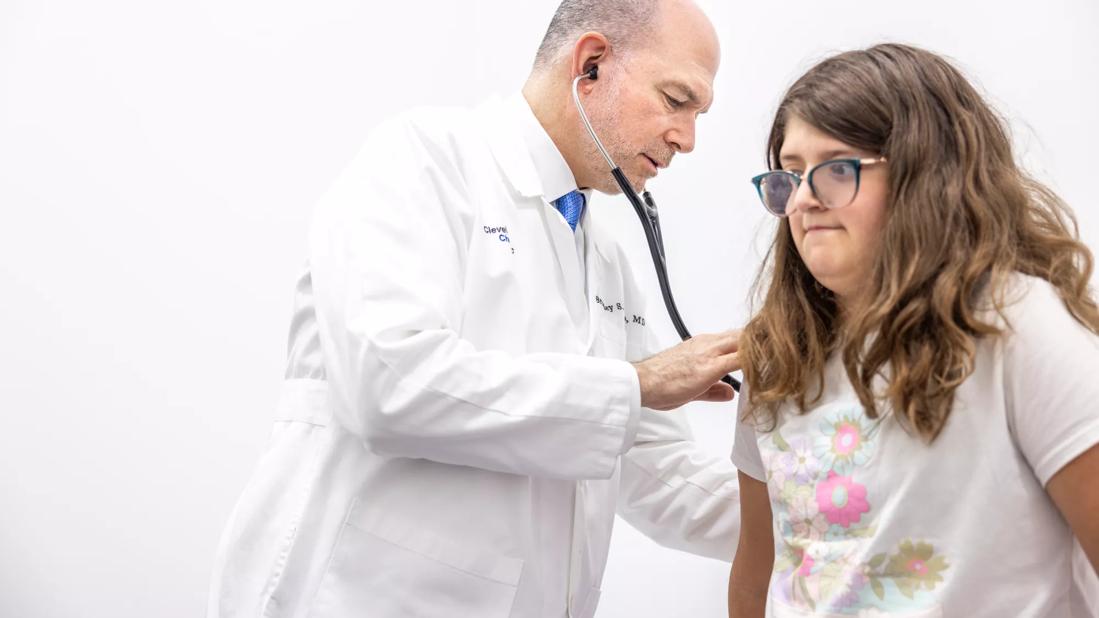Updated guidance and a call to action

Updated guidance from the American Heart Association (AHA) emphasizes risk management and outlines promising neuroprotective strategies for children who have received surgical or catheter-based treatment for congenital heart disease (CHD).
Advertisement
Cleveland Clinic is a non-profit academic medical center. Advertising on our site helps support our mission. We do not endorse non-Cleveland Clinic products or services. Policy
This scientific statement replaces earlier-published guidelines from 2012, which then marked the first time the AHA offered guidance to healthcare professionals on optimizing neurodevelopmental outcomes for this patient population. Since then, new evidence about risk factors and interventions have emerged.
With an estimated prevalence of 9 per 1000 births, CHD is the most common birth defect worldwide. Advances in congenital heart surgery have improved mortality outcomes, thus placing a greater focus on minimizing morbidity and maximizing long-term outcomes.
“Identification and intervention are essential for these children. Neurodevelopmental and psychosocial issues can easily follow them into adulthood and have a lasting impact on their quality of life. The good news is that we are reaching a point where we can identify children who are at higher risk and intervene earlier. We can also utilize neuroprotective strategies to mitigate or prevent adverse neurodevelopmental outcomes,” notes Bradley Marino, MD, MPP, MSCE, MBA, Department Chair of Heart, Vascular & Thoracic and Division Chief of Cardiology and Cardiovascular Medicine at Cleveland Clinic Children’s. Dr. Marino served as chair of the document, published in Circulation and was first author for the initial statement from 2012.
Dr. Marino has been at the forefront of this work for decades. He was also the inaugural chair of the Cardiac Neurodevelopmental Outcomes Committee (CNOC), a network of clinicians, researchers, patients and families around the world to raise awareness, provide support and education and advance research and clinical care for those children with cardiac disease with neurodevelopmental issues.
Advertisement
New additions to the scientific statement include the following:
One notable change from the previous statement regards Risk Category 3, which contains two qualifying high-risk criteria: a history of intervention or hospitalization secondary to CHD prior to age 18, and one or more known risk factors for neurodevelopmental risk. Dr. Marino adds, “The purpose of Risk Category 3 is to easily identify individuals for whom CHD may be a significant contributor to neurodevelopmental delay or disorder.”
Also new to the statement are potential neuroprotective strategies for CHD, which fall under four domains of management. Such strategies have not yet been evaluated in a clinical trial setting but have good observational data to indicate their utility in preventing or mitigating brain injury and other neurodevelopmental issues.
Fetal and Perinatal. This includes prenatal detection of CHD, delivery as close to term as possible, and access to interventions for newborns with a CHD diagnosis that is prone to hemodynamic instability.
Advertisement
Surgical and Perioperative. Strategies include optimizing aspects of cardiac surgery and perioperative care, such as the timing of cardiac surgery in the setting of preoperative risk factors for brain injury, a technically good surgery, minimizing potential harm of cardiopulmonary bypass, and monitoring of cerebral perfusion and oxygen delivery.
In-Hospital Neuroprotection. The section emphasizes family-centered developmental care, encouraging parental/caregiver involvement in patient care and seeking opportunities for timely and appropriate habilitative services.
Supporting Transition from Hospital to Home. The statement highlights the importance of planning for discharge to anticipate post-discharge needs and well-coordinated care as a strategy to reduce healthcare use and increase family functioning and satisfaction.
The new statement reflects important data over the last decade that will help guide risk stratification, management, and neuroprotective strategies for individuals with CHD. Still, the authors acknowledge that more is known about the problems faced by this patient population than actionable strategies to alter their quality of life.
“Our charge for the next decade needs to be on mitigating developmental delays or disorders or preventing them altogether. Policy changes at institutional, state and federal levels can help improve access for patients who require neurodevelopmental services. Similarly, as a field, we need to make neurodevelopmental research and clinical programs a priority.”
Advertisement
Advertisement

Experts advise thorough assessment of right ventricle and reinforcement of tricuspid valve

Reproducible technique uses native recipient tissue, avoiding risks of complex baffles

A reliable and reproducible alternative to conventional reimplantation and coronary unroofing

Program will support family-centered congenital heart disease care and staff educational opportunities

Case provides proof of concept, prevents need for future heart transplant

Pre and post-surgical CEEG in infants undergoing congenital heart surgery offers the potential for minimizing long-term neurodevelopmental injury

Science advisory examines challenges, ethical considerations and future directions

Cleveland Clinic case series demonstrates feasibility and safety